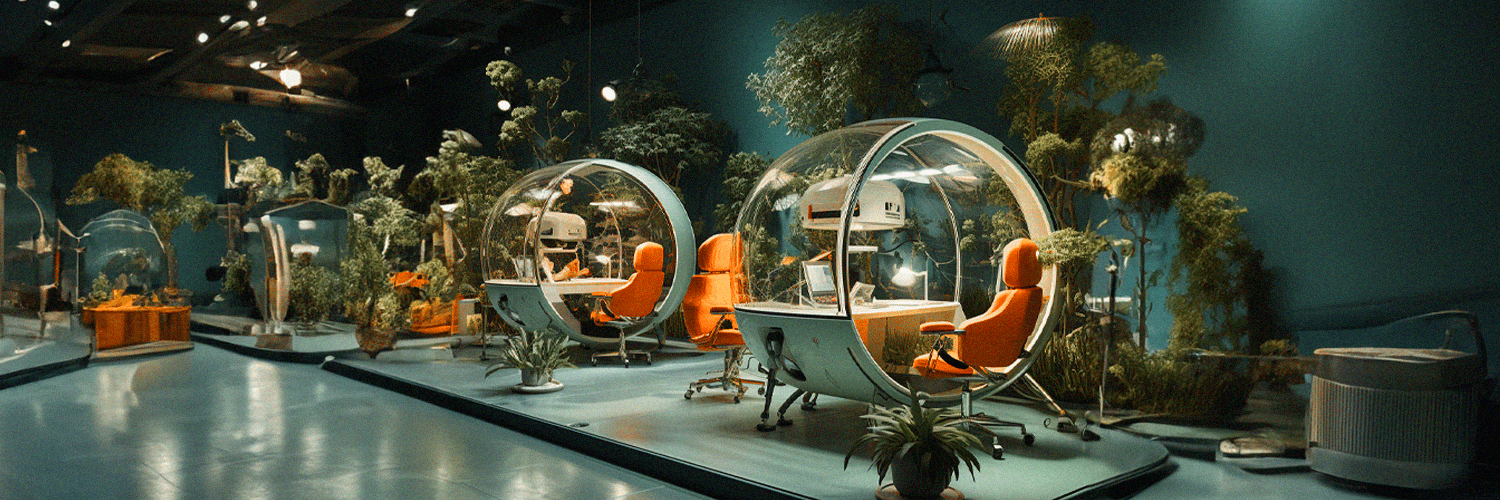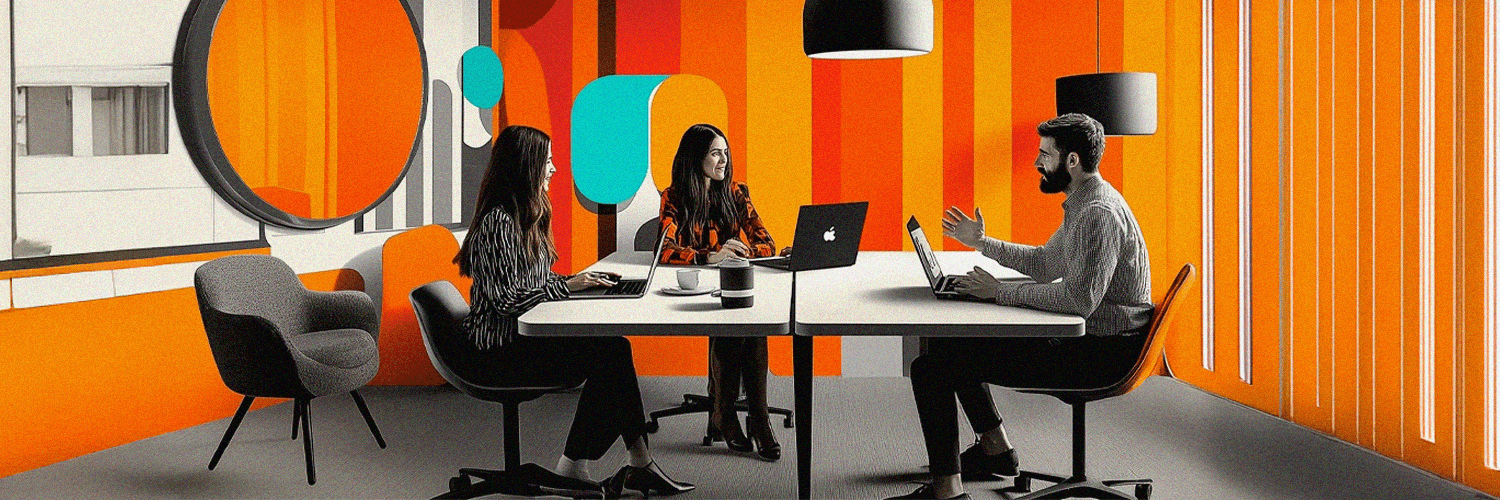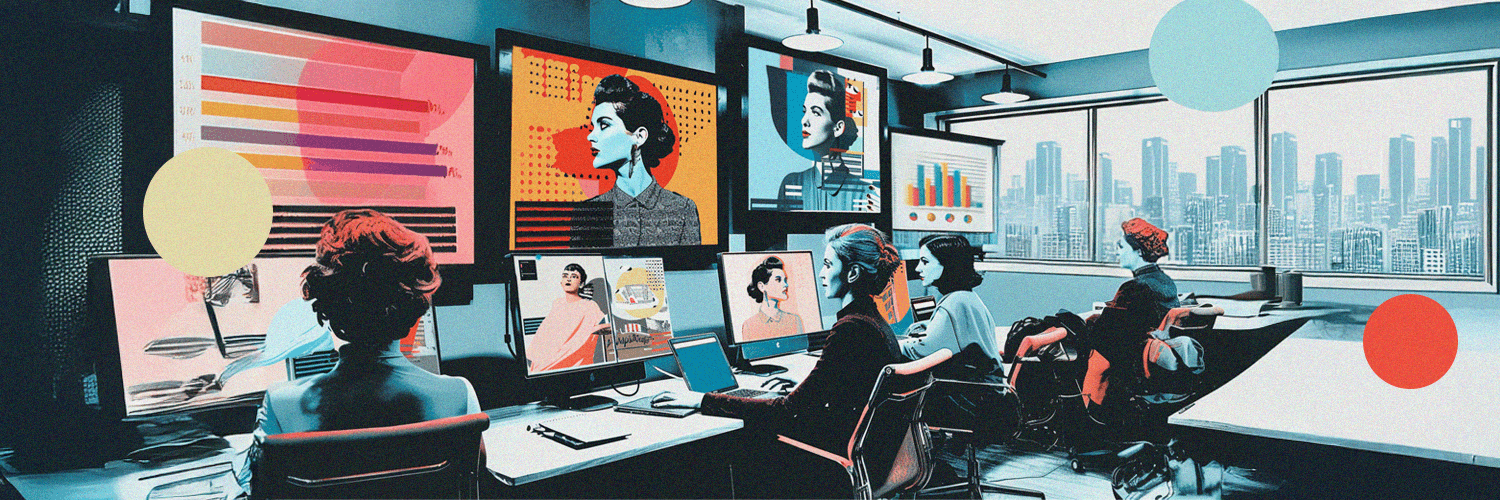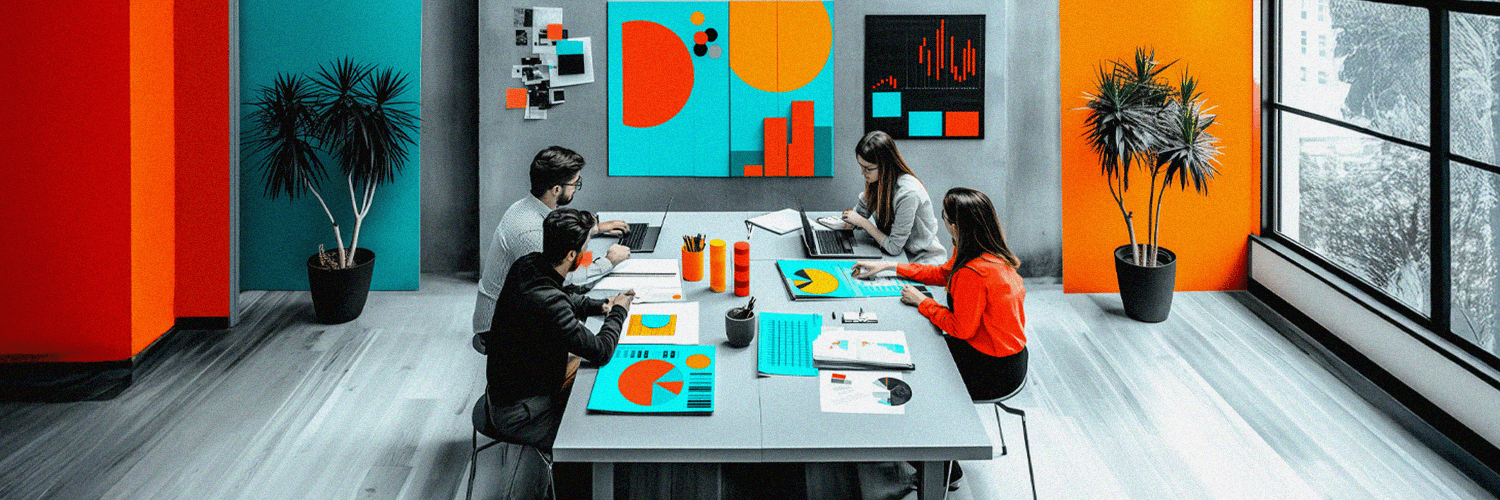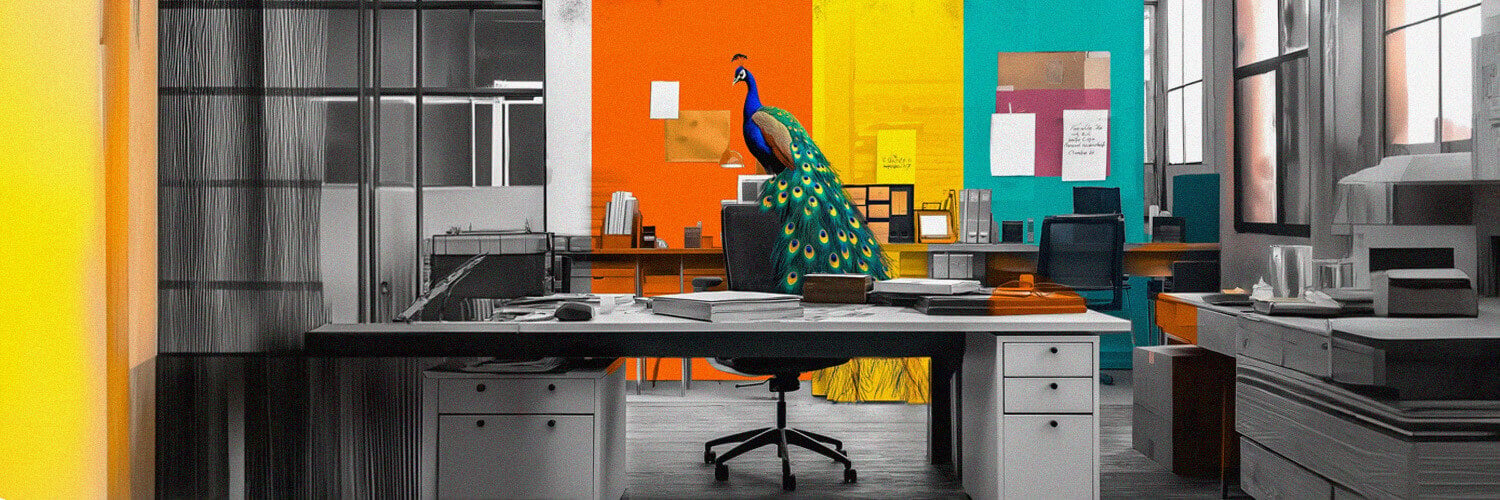It has become increasingly popular among businesses to adopt a relaxed culture and flexible working environment. More and more companies started redesigning their office spaces to provide a modular, highly flexible workplace environment. Curious to know how workplace design impacts employees’ productivity, creativity, and wellbeing? Let’s dive in!
TL;DR:
- Workplace design refers to the organization and equipping of a workspace for optimal productivity, safety, creativity, and flexibility.
- Good office design can lead to less stress and increased productivity, and employers should take employees' physical work environment into consideration.
- Modern office design is human-centered, focusing on making employees feel good, collaborate better, and thrive.
- Trends in workplace design include activity-based workspaces, flexible designs, well-being-focused designs, and creating a destination workplace.
- Activity-based workspaces cater to the different needs of employees, including spaces for concentration, collaboration, learning, and socializing.
- Movement throughout the day is important for employee health and productivity, and office design should promote this.
- A versatile workspace includes quiet areas for concentration, creative spaces for collaboration, and relaxing spaces to unwind.
- Biophilic office design, natural light, and fresh air have a positive impact on employee well-being and productivity.
- Agile working environments, home comfort, unconventional workspaces, and varied colors and textures can enhance employee experience and satisfaction.
- Ergonomic office chairs, sit-stand desks, and tall tables can counteract the harmful effects of prolonged sitting.
- Unconventional spaces like corridors, nooks, and crannies can be transformed into functional work areas, such as small huddle booths, informal meeting spaces, or private one-person pods.
What Does Workplace Design Mean?
Workplace design is the way a workplace is organized and equipped to enable employees’ optimal productivity as well as to provide maximum safety, creativity, and flexibility.
The Evolution of Workplace Design
In the last 20 years, the modern office has gone through several changes. The early 2000s saw the death of workplace cubicles and the rise of open floor plans, while 2015 brought waves of ping pong and foosball tables to offices everywhere. Although office trends come and go, one thing that does not change is the impact that the office environment has on employee productivity and wellbeing.
A quality workspace design leads to a less stressful and more productive working environment. Employers should consider the physical work environment of their employees into consideration. Employees need to feel comfortable and calm in their physical work settings to produce their best work.
Nowadays, workplace design has become more and more human-centered, aiming to make employees feel good about being at the office, collaborate better, and… thrive. Companies are starting to redesign their workspace having in mind the importance of a flexible work model giving employees the freedom to choose their own working hours, working location, work desk, and even working environment (within reason, of course). Employers that understand this will dominate in the competition to attract talent in a shrinking labor force and to retain actual employees in times of a never seen “great resignation” trend.
Many factors contributed (and still are) to the massive workplace design, such as changing demographics, the increasing influence of technology, ongoing talent shortage, financial matters, and poor data on how design impacts employees’ productivity. These factors translate into a few trends shaping up today’s and tomorrow’s workplace design, explained further below.
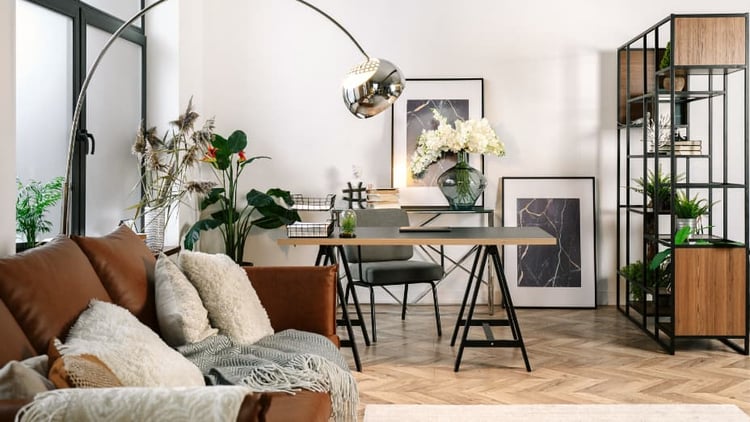
Office Design Trends Today
Design Your Workplace With Flexibility in Mind
If a while ago, the traditional office space model designed for fixed use seemed to work, it is no longer the case for today’s growing business challenges. The adoption of remote work during the pandemic completely shifted employees' expectations about the office and it has become more important than ever to create spaces with purpose. This is why companies nowadays are rethinking basic tenants of workplace design with an eye toward the core reasons why people want to go back to the office. To such a point that modular, adaptable workspaces make it easy to adapt to the changing employee, project, and company needs.
Make Space for an Activity-Based Working Model
An activity-based workspace is designed to meet the needs of every employee, may he be an introvert or an extrovert. For example, if you need a space to concentrate - head to the silent zone. If a team of employees wants to work collaboratively on a project - head to a meeting room with an interactive display. If you want to work on developing a skill - head to the learning zone. If you want to catch up with a colleague over coffee - head to the lounge area. The idea behind the activity-based working (ABW) model is that employees will be more productive when they’re in a suitable work environment, so every space must be carefully designed to foster the required emotions.
Flexible space layout and adaptable furniture make it easy to integrate new technology and multiple working styles. Modularity is an ideal fit for the social, team-based work styles of Millennials and Gen Z workers. For example, movable furniture that fit together in many ways enable a more dynamic, interactive setting.
Consider including multiple zones in your office (re)design plans, such as:
- A social zone inspired by the looks and feel of a coffee shop or cafeteria, to feel energetic and welcoming. Make it a space meant to catch up over coffee, take a 10-minute break or enjoy casual meetings.
- A collaboration zone that will focus more on teamwork and will facilitate discussion. This means that teams can sit close together for a long time collaborating and creating new ideas, just like in a meeting room.
- A learning zone specifically designed to inspire and encourage employees to learn new skills and uphold brand values.
- A silent space is intended for employees that like to work without distractions or noise, on a tight deadline, or who simply prefer to work on their own.
ABW enables employees to be as efficient and productive as possible. When they feel supported, they’re likely to produce great quality work and feel more engaged with the brand. With activity areas to hold private calls, important meetings or to spend a couple of hours without distractions, they can work quickly without compromising quality.
Design for Everybody’s Wellbeing
Without a doubt, our surroundings affect our health. Design for well-being is a top priority for many businesses. Among the findings: prolonged sitting is a profound hazard to health. (You know, sitting is the new smoking.) On the upside, natural light and other elements of nature can improve health and productivity.
One suggested fix is to design spaces to promote movement throughout the day. Ideal features include sit-stand desks and strategic placement of endpoints. Sit-stand desks promote overall health and can reduce back, neck, and shoulder pain. Placing stairs, lounges, and restrooms away from workspaces encourages movement. It’s the same idea as parking your car on the far side of the lot.
Make Your Workplace a Destination
In the “new normality”, people are anticipating a return to a new and different workplace. Simply reopening your office with minimal changes will only cause employees to question whether it’s worth making the commute again. Take time to reconsider the purpose of your workspace and redesign it. When you don’t need dedicated desks for every employee, you have more room for amenities like cafes and recreational rooms. There’s also more room to add inviting design elements, such as plants and artworks that give employees the feeling of arriving at their favorite place in town, rather than in a sterile office.
Recruiting and retaining top talent is a prime business concern. Millennials, in particular, seek workplaces that support their lifestyle. This often means jobs with inspiring, fun, comfortable facilities. Modern furnishings and advanced tech can further sway an applicant’s mind. Combined, these features send the message that employers care about the well-being of their employees. For much of the talent pool, this workplace design trend can make all the difference in their job selection.
Design Your Workspace Integrating User-Friendly Technology
Employees crave a smooth, efficient, and interconnected workplace experience comparable to other daily occurrences they are accustomed to, such as being a well-served customer. Therefore, you need to focus on your employee user experience now as much as you do on your customer experience. If your employees can’t use the tech or the apps and programs you’re providing them with you’ll likely see a huge lag in productivity. In other words, if it’s too hard to use, it’s worthless. Enhancing user experience in the workspace doesn't only rely on a well-managed workplace, but it also means enforcing virtual collaboration tools.
Companies seek easier content-sharing solutions, so by integrating tech into the environment, employees can get down to business quickly. Wasting time in meetings is a big concern in workplace design. Especially, the time wasted setting up for a meeting. Furniture, workstations, lounges, and huddle rooms must be created with connectivity and set up in mind. Common tech integration elements include integrated wireless charging, interactive displays, easy-connect technology touchpoints, articulated monitor arms, built-in power and data, etc.
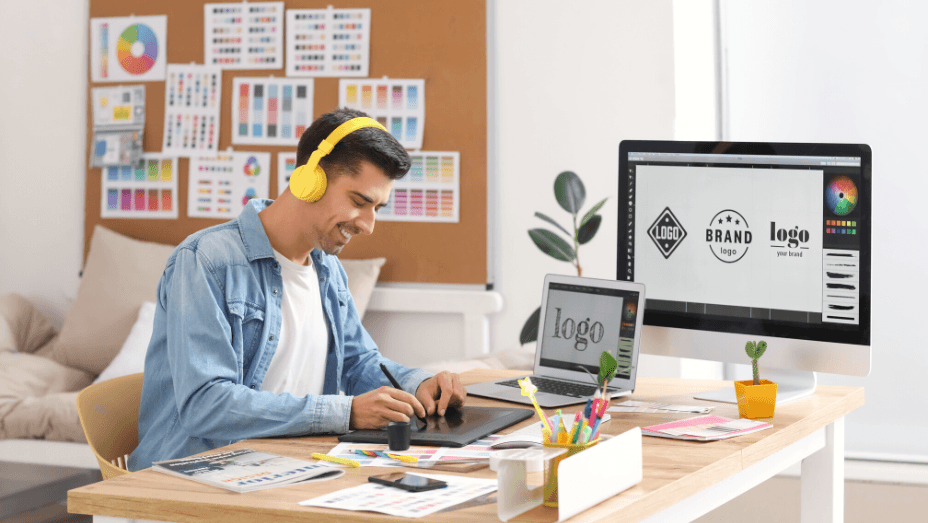
Why It’s Important: 4 Key HR Metrics Affected by Workplace Design
Workplace design has a profound impact on the employees’ health and wellbeing and thus on their performance, engagement and morale. This responsibility rests not only with the facilities team but partly with HR teams also. Or, at least, it can greatly impact its metrics. This analysis of key performance indicators (KPIs) for HR professionals shows which metrics are most affected by office design and environment.
1. Employee Surveys
- They measure employee satisfaction with different elements of a job like the relationship with peers and bosses, rewards and recognition, training and development, tools and facilities, office environment, and company mission and values.
- Leesman Index identifies individual, focused work as the most critical activity, desks, and chairs as the most important physical features, and environmental factors like temperature, noise, natural light, and cleanliness in the top ten. In short, ergonomics has a significant impact on employee satisfaction.
2. Absenteeism:
- Musculoskeletal disorders (MSDs) that occur due to poor workplace design and lack of ergonomic considerations cause absenteeism which further causes low productivity and results.
- Stress, depression, and anxiety – conditions aggravated by poor ventilation, lack of natural light, inefficient space utilization and poor office design - are also solid premises for the growing absenteeism rates at work.
3. Turnover/ Retention:
- The first symptom of disengaged and stressed employees is a rise in absenteeism. Over time this also turns into a higher turnover and lower retention. There is a correlation between the quality of the work environment and employees’ intent to quit, based not only on the access to a flexible working program but also to a modular, adaptable workplace designed with wellbeing intentions in mind.
4. Employee Net Promoter Score (eNPS)
- This is a metric that shows how willing the employees are to recommend their workplace to friends and acquaintances. If they are happy at work, the odds that they will recommend it to others are higher.
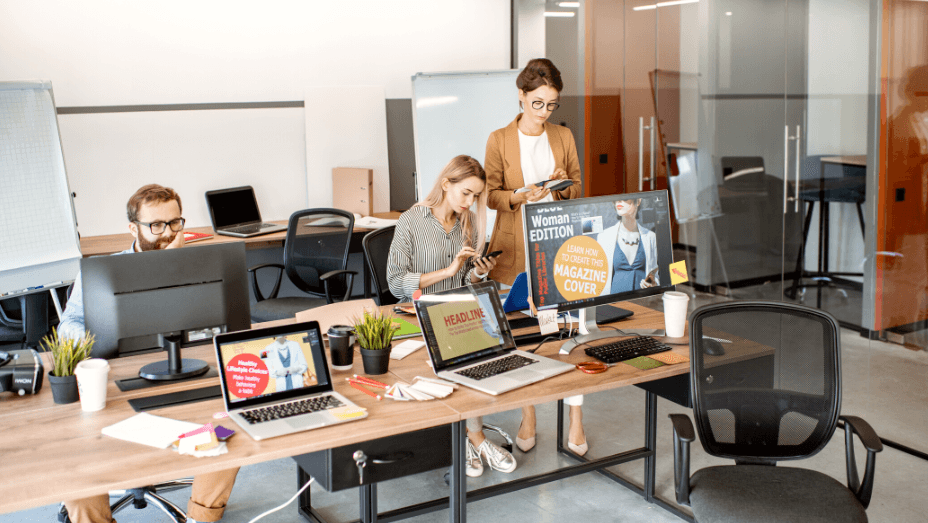
10 Creative Workplace Design Ideas for Great Office Experience
Empowering staff to proactively choose how and where they want to work is critical. Offices should be versatile spaces including quiet areas for concentration, creative spaces for collaboration, and relaxing spaces to unwind. These can have a positive impact on both productivity and staff wellbeing. Here are some great design ideas that you could implement to enhance your employees’ workplace experience.
1. Optimize Office Space
Far from being static, offices should be under constant review. When reviewing space plans and layout options, consider including dedicated spaces for concentration, collaboration, and relaxation, in addition to the traditional workstations and cubicles, which are equally important.
Think corridors, under stairs and other nooks and crannies that have not previously been utilized for any purpose. One of the most prevalent current office design trends is the increasing use of these unconventional spaces which are transformed into functional work areas in the form of small huddle booths, informal meeting spaces, or even private one-person pods.
With a helpful workplace management tool in place, there are no limits to what you can achieve.
2. Bring In More Natural Light
With a great number of days spent indoors, it’s no surprise that natural light is an important factor in planning office spaces. In fact, an HR poll of 1,614 employees, published in the Harvard Business Review, shows access to natural light is the number one attribute we desire in our office environment. It can also have a significant impact on everything, from mood to creativity, and concentration.
Natural light is an important consideration in office design and it can be achieved through effective space planning. For instance, creating open-plan workspaces optimizes natural light. Similarly, including glazed partitioning allows light to filter throughout the workplace.
3. Improve Fresh Air and Natural Ventilation
The benefits of fresh air are numerous. 20% of the air we breathe is used by the brain, so having fresh air ultimately leads to clearer thinking, focus, and concentration. It was also proven that oxygenated blood can significantly elevate brain serotonin synthesis, which can elevate a sense of happiness and well-being in the workplace.
4. End the Harmful Sitting
Prolonged sitting affects us larger and deeper than we might know it yet. As the trends towards health and workplace wellbeing continue, we may also see fundamental changes in the way offices are designed. For instance, Barbara Visser, a visual artist, has designed a conceptual working environment with surfaces that allow working without sitting (i.e. by leaning or standing). While we might be some way from the complete end of sitting, practical applications of this principle already exist in the form of ergonomic office chairs that accommodate natural movement and encourage good posture, sit-stand desks that allow better posture and avoid repetitive strain when sitting, tall tables to encourage standing meetings, etc.
5. Use Multiple Colors
Colour can make a big impression. For example, soft colors improve concentration, and vibrant colors enhance collaboration and creativity. Traditionally, offices have included uniform furniture – chairs of one type, and all the same colors. The idea that everything must match perfectly is outdated. Colour ultimately has a significant impact on the mood and productivity of employees. Using a mix of pantones in office furniture can lift the mood of an office and its staff. Different styles, brands, finishes, and fabrics of office chairs, can help create a fun office environment to work in.
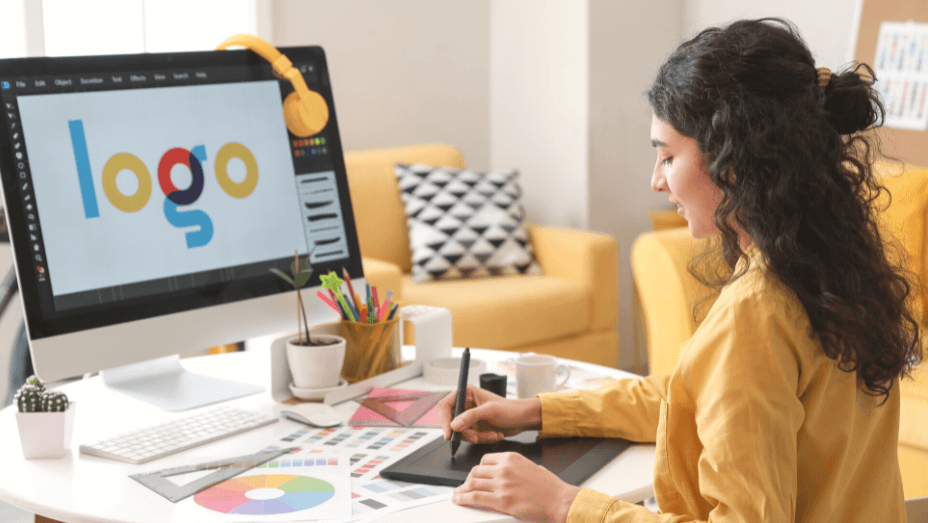
6. Enable Agile, Flexible Working
Agile working is part of an employee-centered way of work that focuses on how work is done, not where it is done. For example, agile working environments empower employees to decide when, where, and how they work, which improves employee experience and overall satisfaction.
Flexible, agile, and hybrid working design strategies include the use of multifunctional working spaces, the creation of collaborative work areas, and the selection of furniture that reconfigures for different purposes. Having adaptable collaborative workplaces allows teams of different sizes to move around the office. Creating spaces that easily adapt to the different requirements can be supported with smart choices of furniture, for example, chairs and tables that can be easily moved and reconfigured, or shelving that can easily form a divider creating areas within an open-plan office environment.
7. Home Comfort in the Workplace
As the workplace evolves, we are starting to see elements of the home becoming more widely used. Creating a warm home environment with colorful sofas, chairs, and tables helps staff and visitors to unwind and relax. This, in turn, is credited with boosting productivity and allowing staff to be at their creative best.
8. Biophilic Office Space
One of the easiest and least expensive ways to stimulate productivity in your office and reduce stress is to harness the power of plants. When plants are present, tasks are completed faster and to a higher standard. For example, computer workers boosted their productivity around plants by 10-15%. Plants can also impact our mood, lower our stress levels, as well as have various other health benefits.
This principle of interacting with nature is being embedded into the office in the form of biophilic office design. From the inclusion of plant life in various parts of the office to living walls and rooftop gardens, plants help separate office space and improve office aesthetics, and air quality.
9. Unconventional Workspaces
Unconventional workspaces are those areas that in the past have not been used or even considered spaces where staff could work from – corridors, nooks, and crannies, or even an open space under the stairs with bean bags or sofas. Technology has of course driven this trend and enabled staff to work from anywhere within the workplace with plug-and-play spaces located throughout the office.
10. Textures and Finishes
Human nature dictates that we are drawn to natural textures like wood, stone, and metals. It’s the same principle that lies behind biophilic office design, bringing elements of the outdoors into the workplace. Wood or wood-inspired flooring has become hugely popular, as have cement surfaces. The trend for unusual material combinations – metals, wood, textiles, and stone – has been growing and we will see even more of this.
Workplaces are in a state of rapid change, influenced by new generations of professionals with different working styles, faster and more capable technologies, greater insight into the impact of design on people’s wellbeing, etc. Companies seeking to maximize profit will greatly benefit from implementing flexible, activity-based workspaces designed to integrate technology and boost office creativity and productivity easily.
What Do the Best Office Spaces Have?
The best office space combines thoughtful office design and functionality to create an environment where people can work comfortably and efficiently. Here are key features that make an office space great:
- Comfortable Furniture: High-quality desks and ergonomic chairs are essential. They should support posture and prevent discomfort, helping employees stay productive.
- Flexible Layouts: An ideal layout combines open office areas for collaboration with private meeting rooms or conference rooms for focused work. This gives employees the flexibility to work as needed.
- Lounge Areas: Cozy lounge areas where employees can relax or have informal meetings add to a cool office vibe. These spaces are great for creativity and casual conversations.
- Office Interior and Decor: The office design should incorporate stylish decor that makes the environment more inviting and visually appealing. This could be plants, art, or modern lighting.
- Incorporating Open Space: An open space plan can enhance communication, but it should balance privacy by incorporating quiet zones or pods.
- Kitchen: A well-equipped kitchen for breaks, snacks, and meals promotes a healthy work-life balance.
- Versatile Floor Plan: A flexible office space with a smart floor plan allows for changes as the company grows, making it easy to add more desks or furniture when needed.
By focusing on these elements, companies can create functional yet aesthetically pleasing office spaces that boost employee well-being and productivity.
A Few Ideas for Home Office Design
When designing a home office, a few key ideas can transform it into a cool office space that inspires productivity. Start with a comfortable, ergonomic desk and chair to support long working hours. The home office layout should make efficient use of space while also allowing for flexibility. Incorporating natural light is crucial, as it brightens the space and boosts energy.
For the office interior, consider adding personal touches through decor, like plants, artwork, or an accent wall, to give your home office character. You can take cues from designer trends or seek inspiration from magazines and websites. Use the ceiling to hang unique lighting fixtures, if possible, to make the space stand out. Even in a home office, creating a small, collaborative area can foster creative thinking, especially if you occasionally work with others. These home office ideas can help create a functional and motivating space.
